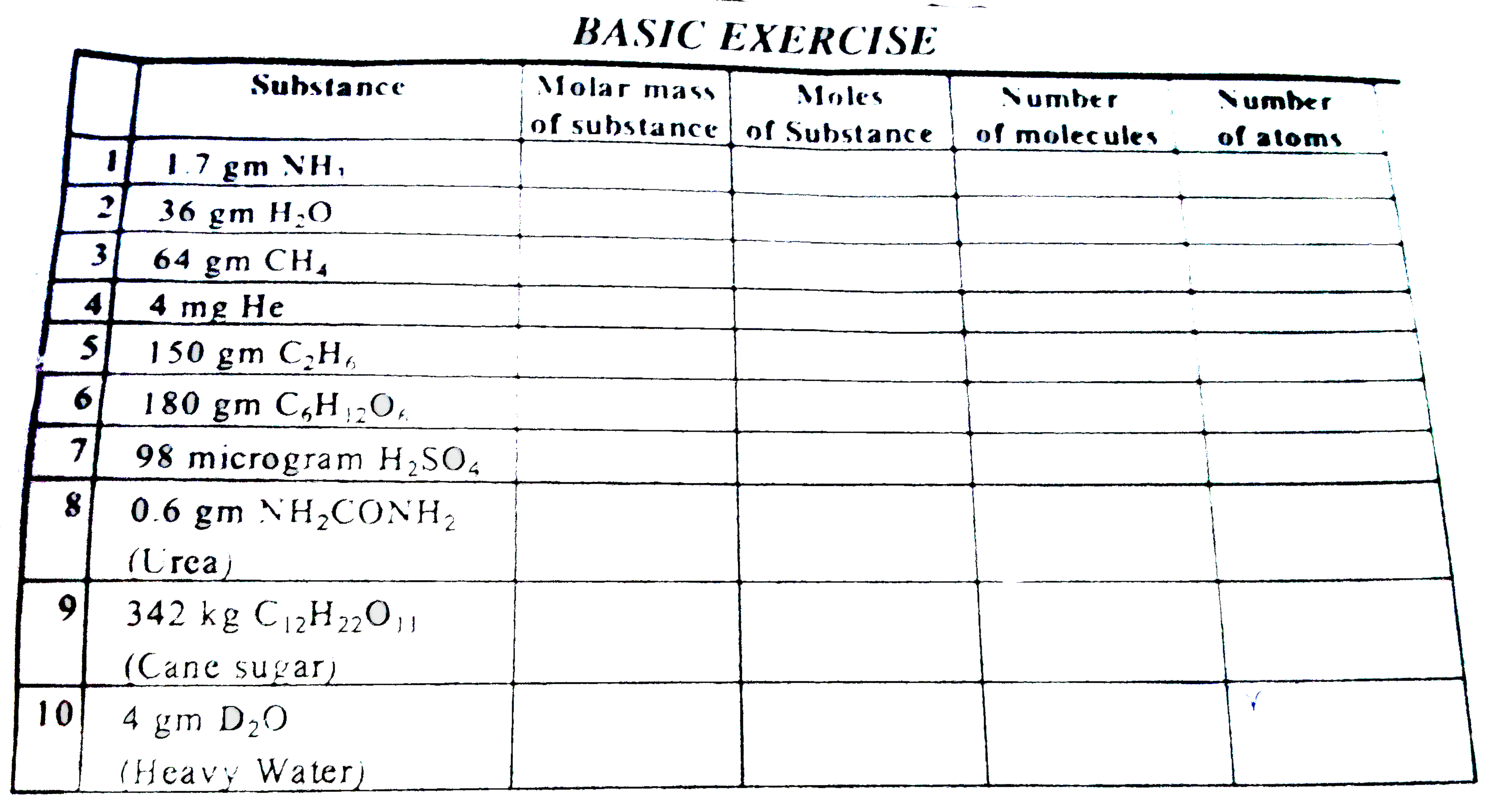
2A+3B→4C+D ⏐↓ (excess)3C→2E
If in the above reaction 6 moles of E are produced , find moles of 'A' initially taken.
Text Solution
The correct Answer is:(##ALNNCCHMMCE01029_A01##)
4.5 mole
|
Topper's Solved these Questions
- MOLE CONCEPTBOOK - ALLENCHAPTER - MOLE CONCEPTEXERCISE - S-I (Problems Related with Different Types of Atomic Masses & Basic Concept of Mole)
53 Videos
- MOLE CONCEPTBOOK - ALLENCHAPTER - MOLE CONCEPTEXERCISE - S-II
18 Videos
- MOLE CONCEPTBOOK - ALLENCHAPTER - MOLE CONCEPTEXERCISE - Some Solved Examples
9 Videos
- METALLURGYBOOK - ALLENCHAPTER - METALLURGYEXERCISE - EXERCISE-05 [B]
26 Videos
- p-Block Element BOOK - ALLENCHAPTER - p-Block Element EXERCISE - All Questions
20 Videos
Similar Questions
Knowledge Check
For the reaction A + 2B → C, 5 moles of A and B moles of B will produce
A5 moles of CB4 moles of CC8 moles of CD13 moles of CFor the reaction A+2B→C,5moles of A and 8moles of B will produce :-
A5 moles of CB4 moles of CC8 moles of CD13 moles of C

A→2B+C
3B→2D
Find moles of D produced if initially 3 moles of A are taken.
View Solution
A→2B+C
3B→2D
Find moles of D produced if initially 3 moles of A are taken.
View SolutionFor the reaction A+2B→C,5moles of A and 8moles of B will produce :-
View SolutionFor the reaction A+2B→C, 5 moles of A and 8 mole of B will produce
View Solution
NH3COONH4Δ−−→2NH3+CO2
If 6 moles of NH3 is produced then find moles of NH2COONH4 intially taken.
View SolutionNH2COONH4Δ−−→2NH3+CO2
If 6 moles of NH3 is produced then find moles of NH2COONH4 intially taken.
View Solution

